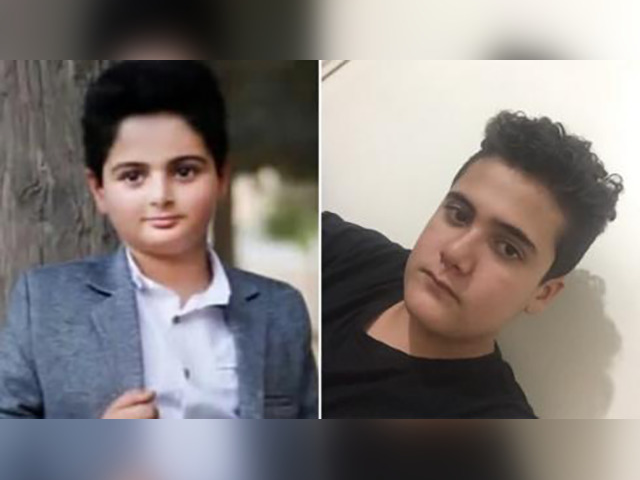Over a dozen people were killed across Iran on Tuesday and Wednesday, as the anniversary of the momentous November 2019 protests dovetailed with the massive demonstrations against Iran’s harsh hijab laws and the killing of Mahsa Amini, a young woman accused of violating them.
Casualties reportedly included both Iranian security forces and civilians, with at least two children counted among the latter.
Iran’s 2019 protests were sparked by an increase in fuel prices. After several days of demonstrations and looting in over a hundred municipalities across Iran, the regime shut down the Internet and cracked down with heavy violence, killing over 300 people. The crackdown came to be known among dissidents as “Bloody November.”
The current uprising began after Iran’s thuggish “morality police” killed 22-year-old Mahsa Amini during a visit to Tehran from her home in the western city of Saqez. Amini was seized by a “guidance patrol” that decided she wasn’t wearing her headscarf properly. The Iranian government claimed she died from pre-existing medical conditions while in custody, but few outside the most hardcore regime loyalists believe that explanation.
Human rights groups counted over 300 deaths in the Amini protests at the beginning of November. Last week, Iran pushed back against a European effort to send in United Nations investigators who could “address the deteriorating human rights situation in the Islamic Republic of Iran, especially with respect to women and children.”
According to Al Jazeera News, the “deadliest incident” this week occurred in the southwestern city of Izeh. Protesters said it was a murderous crackdown on dissent, while Iranian officials claimed two “terrorists” on a motorcycle fired into a “riot,” killing seven people. The two children killed in the incident were described by the authorities as Kian Pirfalak, age 9, and Sepehr Maghsoudi, 14.
Sources close to the families of the two boys told the BBC on Thursday the children were killed by regime security forces firing live ammo at protesters, not motorcycle-riding terrorists as state media claimed. Opposition activists said Kian was shot in the chest, while Sepehr was hit in the head. A source close to Sepehr’s family claimed regime security forces stole his body from the morgue.
The BBC described a video on social media that showed a member of Kian Pirfalak’s family standing over his body and saying, “He was going home with his father and was targeted with bullets by the corrupt regime of the Islamic Republic.”
“At least six more people were killed in the central province of Isfahan. Three protesters were among the dead, and authorities said two members of the Basij paramilitary forces were killed after assailants on a motorcycle opened fire on them and fled the scene. A third security officer also died,” Al Jazeera wrote, quoting local reports.
Human rights groups said at least three protesters were killed in different cities on Tuesday, while Iranian state media claimed three security officers were killed. Demonstrations were reported in many Iranian cities, including the capital of Tehran. Videos smuggled out of Iran, which could not be immediately authenticated by outside journalists, showed security agents firing into crowded underground rail stations and beating train passengers with batons.
Protesters and state media also disagree about the effectiveness of sympathy strikes called for this week, with the regime claiming few stores were closed and many of those that did shut down were forced to close by protest mobs.
Iranian Foreign Minister Hossein Amirabdollahian on Thursday continued the regime’s strategy of accusing foreign powers of cultivating the Amini protests in a bid to divide Iran and start a “civil war.”
“Various security services, Israel and some Western politicians who have made plans for civil war, destruction and the disintegration of Iran, should know that Iran is not Libya or Sudan,” Abdollahian said.
The commander of the theocratically-controlled Islamic Revolutionary Guard Corps (IRGC), a designated terrorist organization, likewise said on Thursday that America, Israel, Europe, and Saudi Arabia have joined forices to “wage war against God and the martyrs” of Iran.
“America likes to see the youth of the country killed in the street and the faces of the people withered, and to divide the nation and divide Iran, and these evil dream of the enemy will never come true because the Iranian nation stands strong and resistant,” Maj. Gen. Hossein Salami said.
Salami insisted Iranian women love wearing the hijab as a “bastion to preserve their high values” and said they will not “respond to the call of the devil.”
CNBC reported on Thursday the Iranian judiciary has issued three more death sentences against protesters. The first death sentence of the Amini protests was imposed on Sunday.
“A whole younger generation is challenging the rules like wearing a headscarf and the government in Iran has its hands fully trying to manage the protests. The protests are beginning a great deal of American and European media attention, and severe criticism of Iran. This could potentially bring a whole new set of sanctions on Iran for its crackdown,” Johns Hopkins University professor Vali Nasr told CNBC.
As it happens, the U.S. did impose new sanctions related to Iran on Thursday, but they were against companies in China, Hong Kong, and the United Arab Emirates accused of smuggling petrochemicals from Iran in defiance of previous sanctions.

COMMENTS
Please let us know if you're having issues with commenting.